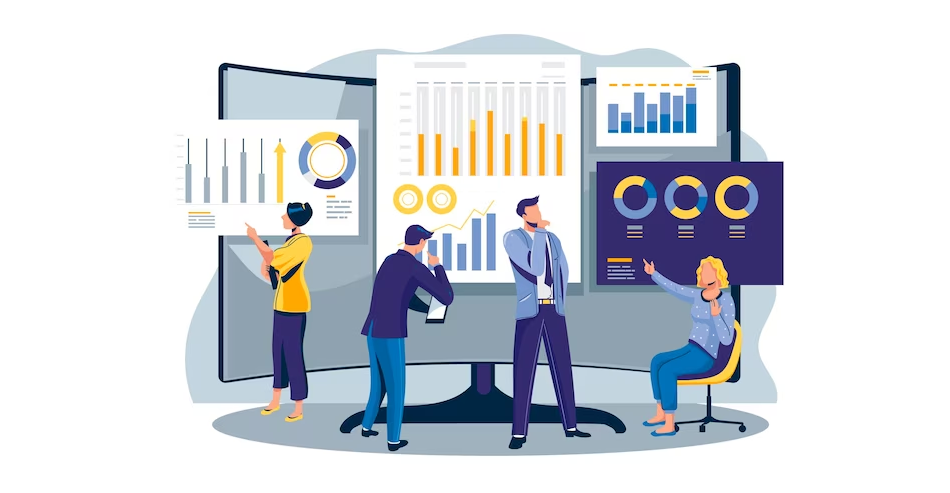
Creating Productive and Inclusive Modern Work Environments: Trends, Challenges and Solutions
The world of work is changing rapidly, and modern work environments are becoming more diverse, flexible, and technology-driven. In this article, we will explore the characteristics of modern work environments, the importance of flexible work arrangements, the impact of technology on work environments, the advantages and disadvantages of remote work, and the latest trends in modern office design.
What are Modern Work Environments?
Modern work environments are workplaces that embrace the latest trends, technologies, and design concepts to create a more efficient, productive, and inclusive workplace culture. These workspaces prioritize flexibility, collaboration, and innovation, and they offer a variety of work settings that support different work styles and preferences.
Characteristics of Modern Work Environments
Some of the key characteristics of modern work environments include:
- Flexibility: Modern work environments prioritize flexibility and offer a variety of work settings that support different work styles and preferences. This includes agile workspaces, hot-desking, and telecommuting options.
- Technology: Technology plays a crucial role in modern work environments, with companies adopting the latest tools and software to streamline workflows and improve collaboration.
- Workplace culture: Modern work environments prioritize workplace culture and invest in creating a positive, inclusive, and diverse environment for their employees.
- Work-life balance: Work-life balance is a top priority in modern work environments, with companies adopting flexible work arrangements and policies to support employee well-being.
Importance of Flexible Work Arrangements
Flexible work arrangements have become increasingly important in modern work environments, with more companies adopting telecommuting, flexible schedules, and other work arrangements that allow employees to work remotely or on a flexible schedule. This has several benefits for both employees and companies, including:
- Improved work-life balance: Flexible work arrangements allow employees to better balance their work and personal responsibilities, which can improve their overall well-being and job satisfaction.
- Increased productivity: Studies have shown that employees who have flexible work arrangements are more productive and engaged than those who do not.
- Attracting and retaining talent: Companies that offer flexible work arrangements are more attractive to job seekers and are more likely to retain their top talent.
Impact of Technology on Work Environments
Technology has had a profound impact on work environments, with companies adopting new tools and software to improve productivity, collaboration, and communication. However, technology can also have negative effects on work environments, such as:
- Increased stress and burnout: Constant connectivity and the expectation of always being available can lead to increased stress and burnout among employees.
- Decreased face-to-face interaction: Technology can sometimes replace face-to-face interaction, which can lead to decreased collaboration and communication among team members.
- Cybersecurity risks: The increased use of technology in the workplace can also lead to cybersecurity risks, such as data breaches and hacking.
Advantages and Disadvantages of Remote Work
Remote work has become increasingly popular in modern work environments, with more companies offering telecommuting options to their employees. Remote work has several advantages, such as:
- Increased flexibility: Remote work allows employees to work from anywhere, which can improve their work-life balance and overall well-being.
- Reduced commuting time and costs: Remote work eliminates the need for commuting, which can save employees time and money.
- Access to a wider talent pool: Companies that offer remote work options can access a wider pool of talent, as they are not limited to hiring employees who live within commuting distance.
However, remote work also has some disadvantages, such as:
- Lack of face-to-face interaction: Remote work can sometimes lead to a lack of face-to-face interaction, which can negatively impact collaboration and communication among team members.
- Difficulty in maintaining work-life balance: Remote work can blur the boundaries between work and personal life, making it harder for employees
to switch off after work hours. This can lead to burnout, stress, and other mental health issues, affecting not only the employees' well-being but also their productivity and engagement at work. Therefore, it is crucial for companies to establish clear policies and guidelines to help remote workers maintain a healthy work-life balance.
On the other hand, remote work can also bring about various benefits for companies. One of the most significant advantages is the reduced cost of office space and other expenses associated with maintaining a physical workplace. This is especially relevant for small businesses and startups that operate on a limited budget. Additionally, remote work can increase employee productivity and engagement as it provides them with more flexibility and autonomy over their work schedules.
However, remote work is not the only solution to creating modern work environments. Companies can also implement flexible work arrangements, which allow employees to work from different locations, such as co-working spaces, cafes, or home. Agile work, which refers to a flexible approach to work that involves team collaboration and cross-functional projects, can also be an effective way to improve employee engagement and productivity.
Furthermore, modern office design plays a critical role in creating inclusive and productive work environments. Ergonomic office design, for instance, focuses on creating workspaces that promote employee health and well-being, such as adjustable desks, comfortable chairs, and adequate lighting. Collaborative spaces, such as open-plan offices and breakout areas, can also encourage teamwork, creativity, and communication among employees.
Conclusion
In conclusion, modern work environments are characterized by their flexibility, inclusiveness, and focus on employee well-being and productivity. Remote work, flexible work arrangements, agile work, and modern office design are some of the latest trends and solutions that companies can adopt to create such environments. While each approach has its advantages and disadvantages, it is essential to find the right balance that suits the company's needs and the employees' preferences. By doing so, companies can attract and retain top talent, boost employee engagement and productivity, and achieve long-term success.
Business

